DAY 1
We started our tour at the Guinness Storehouse in Dublin before heading south of the city.
Dublin meaning "town of the hurdled ford", is the capital and most populous city of Ireland. The English name for the city is derived from the Irish name Dubhlinn, meaning "black pool". Dublin is situated in the province of Leinster near the midpoint of Ireland's east coast, at the mouth of the River Liffey and the centre of the Dublin Region.
My first taste of Guinness and I liked it!
Dublin Guinness Storehouse
Rock of Dunamese
A wee bit windy up there!
Excavations in the 1990s demonstrated that the Rock was first settled in the 9th century when a fort or dún was constructed on the site. In 845 the Vikings of Dublin attacked the site and the abbot of Terryglass was killed there. There is no clear evidence of 10th–11th century occupation.
Adare Town
An adorable local playing some Irish tunes
Adare , meaning "ford of the oak" (Population 2,454 is a village in County Limerick, Ireland.
A great way to bond with our tour group; have a few Irish Car bombs! They were really tasty!
An Irish Car Bomb is a tasty little Irish variation of the common boilermaker. This high octane drink is usually made up of three quarters of a pint of Guinness stout beer, one half shot of Bailey's Irish Cream liqueur and one half shot of Jameson Irish Whiskey.
Randy Leprechaun pub in Annascaul
Our driver and guide, Seanie is from this town!
Annascaul or Anascaul is a village on the Dingle Peninsular in County Kerry, Ireland. Different suggestions as to the original meaning of the name include "Scail's River", "River of the Shadows" or "For of the Heroes".
Day 2
Slea Head drive
It is a well known and recognised landmark and also a very scenic viewpoint, with a dramatic view of the Blasket Islands. On the 11 March 1982, the Spanish container ship, Ranga, was wrecked at Dunmore head, close to Slea Head after losing power in a storm.
It took acknowledging my fear and acting anyway for me to climb and stand on this cliff and how freeing it was to be there!
Sleeping Giant
Inishtooskert is the northernmost of the Blasket Islands, County Kerry, Ireland. The name means "northern island". The island is also known as An Fear Marbh (the dead man) or the sleeping giant due to its appearance when seen from the east. Inishtooskert holds important seabird colonies, as well as extensive ruins of ancient stone buildings.
I had to get my feet in the sand and sea, it was refreshing to say the least! I had wet pant legs for the rest of the day as the sea surprised me with a big, powerful wave!
Dingle Town...
Fungie the dolphin!
We didn't see the real Fungie, but his presence was there as people were dressed up as him!
In 1984, a young bottle-nosed dolphin started to appear at the mouth of Dingle Harbour. The now world-famous dolphin, Fungie has remained in Dingle since, and has become both a friend to the locals and a great "attraction" for visitors.
Principal industries in the town are tourism, fishing and agriculture: Dingle Mart (livestock market) serves the surrounding countryside. In 2006 Dingle had a population of 1,920.[1] Dingle is situated in a Gaeltacht region.
Inch Beach
Inch Beach, located in Kerry The beach is a sand spit jutting into the sea between Dingle Harbour and Castlemaine Harbour.
Day 3
Exploring Killarney National Park
How enjoyable it was exploring this beautiful park via horse and carriage on a warm, sunny day!
Ross Castle
Ross Castle is the ancestral home of the O'Donoghue clan though it is better known for its association with the Brownes of Killarney who owned it until recently. It is located on the edge of Lough Leane, in Killarney National Park.
Killarney / National Park
Killarney National Park is located beside the town of Killarney, County Kerry, Ireland. It was the first national park established in Ireland, created when Muckross Estate was donated to the Irish state in 1932. The park has since been substantially expanded and encompasses over 102.89 km2 (25,425 acres) of diverse ecology, including the Lakes of Killarney, Oak and Yew woodlands of international importance, and mountain peaks. It has Ireland's only native herd of Red Deer and the most extensive covering of native forest remaining in Ireland
Our group on this glorious, sunny day on the Ring of Kerry tour!
Ring of Kerry
The Ring of Kerry is a tourist trail in County Kerry, south-western Ireland. The route covers the 179 km circular road, starting from Killarney, heading around the Iveragh Peninsula and passing through Kenmare, Sneem, Waterville, Cahersiveen and Killorglin.
Cahersiveen
Waterville
The town's name in Irish refers to the river in the case of "The Little Whirlpool", or "The Sickle" refers to the shape of Ballinskelligs Bay on which the town sits; the name however has been transplanted onto the lake with the Irish name being Loch Luíoch or Loch Luidheach.
This baby sheep was so adorable!
It took everything I had not to take this little fellow home with me!
Day 4
Blarney Castle
Blarney Castle is a medieval stronghold in Blarney, near Cork, Ireland, and the River Martin. Though earlier fortifications were built on the same spot, the current keep was built by the MacCarthy of Muskerry dynasty, a cadet branch of the Kings of Desmond, and dates from 1446. The noted Blarney Stone is found among the machicolations of the castle.
I kissed the Blarney Stone!
The Blarney Stone is a block of bluestone built into the battlements of Blarney Castle. According to legend, kissing the stone endows the kisser with the gift of the gab (great eloquence or skill at flattery). The stone was set into a tower of the castle in 1446.
The stunning grounds of the castle
Some caves near the castle
The Wishing Steps - located in the grounds of the Blarney Castle
The legend of the wishing steps is if you walk up and down the steps with your eyes closed thinking about your wish the entire time your wish will come true within one year.
I completed this task and am confident my wish is coming true!
St Colmans Cathedral
St. Colman’s Cathedral is the cathedral church of the Roman Catholic Diocese of Cloyne, located in Cobh. The architects were Edward Welby Pugin and George Ashlin, who commenced construction in 1867. When Pugin died in 1875 Ashlin took on the services of a Dublin architect, Thomas Aloysius Coleman to assist him in the completion of the project. The Clerk of Works was Charles Guilfoyle Doran who supervised the project until his death in 1909, when the cathedral was almost complete. The cathedral was finally consecrated in 1915.
My journey of Ireland continues in Part II!
* Information in italics are provided by Wikipedia
Highly recommend:
Paddy Wagon Tours: http://www.paddywagontours.com/
Guinness Storehouse: http://www.guinness-storehouse.com/en/Index.aspx
Ring of Kerry: http://ringofkerrytourism.com/
Killarney National Park: http://www.killarneynationalpark.ie/
Blarney Castle: http://www.blarneycastle.ie/
















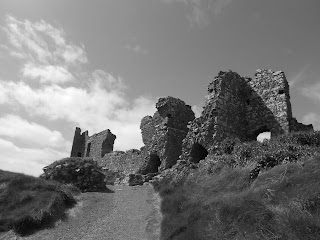
















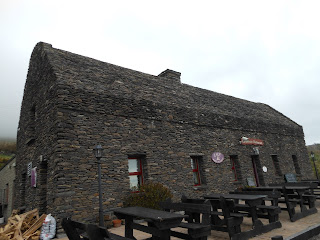

















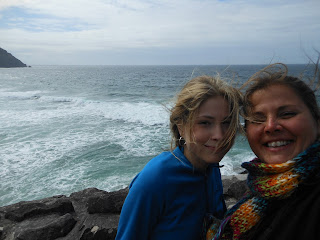








































































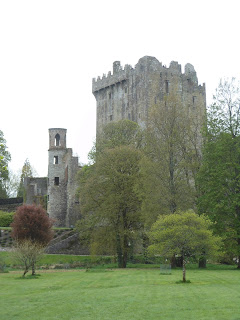





















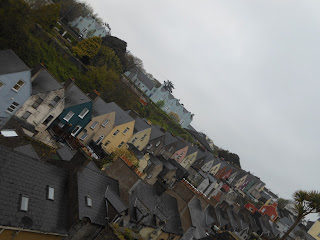



No comments:
Post a Comment